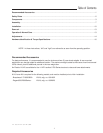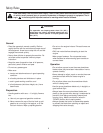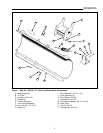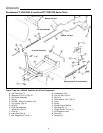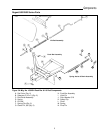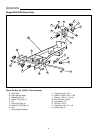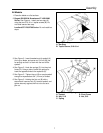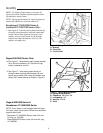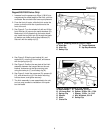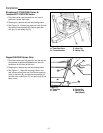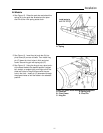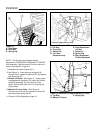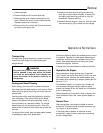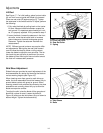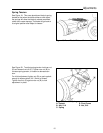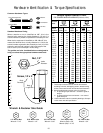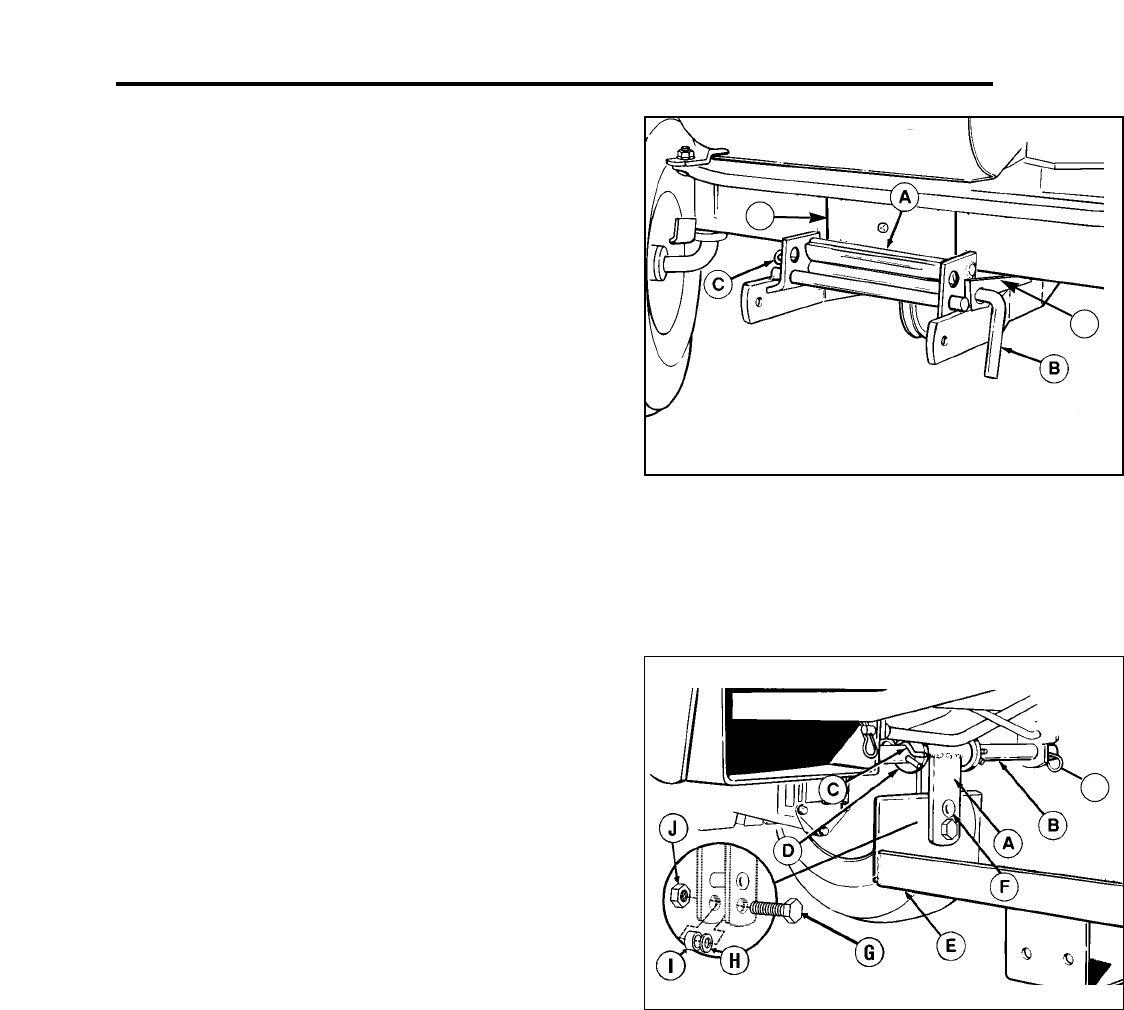
9
Regent/500/2500 Series Only:
1. Increase front tire pressure to 20 psi (138 kPa) to
compensate for added weight of the hitch, plus bar
and blade. Be sure both tires have equal pressure.
2. From the front of tractor, slide the hitch under the
tractor so that the hitch bar is positioned at the
front of the unit.
3. See Figure 8. Turn the wheels fully left and lift the
front hitch bar (A) up onto the tractor brackets (D).
Make sure it is fully seated into the tractor brack-
ets. Install the long hitch pin (B) through the brack-
et (bottom rear holes) and up-stop brackets (E).
Secure it with the safety clip (C).
Figure 9. Installing Hitch to Rear Bracket
A. Rear Bracket G. Capscrew, 3/8-16 x 2
B. Lift Lever Rod H. Spacer, 25/64 x 5/8 x 17/64
C. Spring Clip I. Spacer, 13/32 x 1 x 13/16
D. Washer J. Nut, Whizlock, 3/8-16
E. Hitch K. Safety Clip
F. Clevis Pin
4. See Figure 9. Slide the rear bracket (A), and
washers (D), onto the lift lever shaft, and secure
with the spring clips (C).
5. See Figure 9. Position the rear plate of the hitch
assembly between the hanger tabs on the rear
bracket, and secure at the top mounting hole
using the clevis pin (F), and safety clip (K).
6. See Figure 9. Install the capscrew (G), spacers (H
& I), and whizlock nut (J) in the lower mounting
hole as shown, and tighten securely.
7. The hitch assembly is now assembled to the unit,
and you may proceed to installation of the push
bar and blade.
K
Assembly
Figure 8. Installing Hitch to Front of Tractor
A. Hitch Bar D. Tractor Brackets
B. Hitch Pin E. Up-Stop Brackets
C. Safety Clip
E
D



